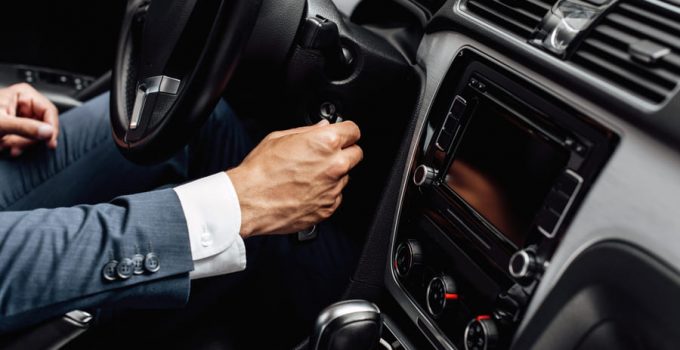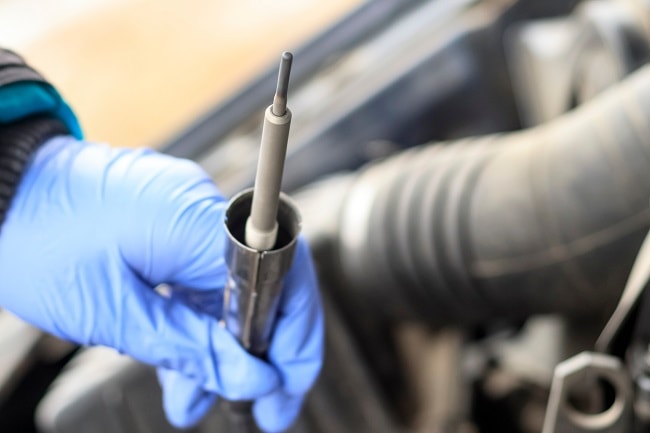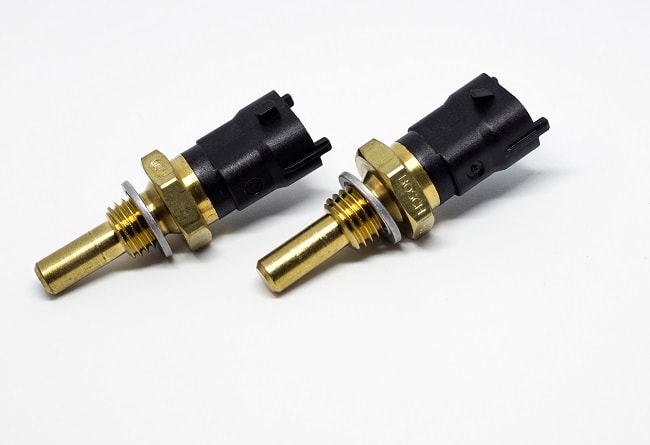
If your vehicle fails because your engine will not start , this can have various causes. A car often does not start, or only starts very poorly, even under very specific environmental conditions. In the following article we will explain possible reasons for this and offer appropriate solutions.
Contents
What are the reasons if your car does not start?
The causes of a vehicle not starting include the following defects, among others:
- Starter failed,
- Battery not sufficiently charged (or defective),
- Defective alternator,
- Interrupted power supply (e.g. due to a cable being bitten by a marten),
- Leaks in cables and live components (ignition distributor),
- Defective ignition lock/ignition coils/spark plugs,
- Lack of fuel (due to defects or blockages in the area of the fuel pump, the fuel filter or the fuel line).
What can you do if your car won't start?
First you should try to narrow down the cause. A quick check, for example, is whether there is enough fuel. You should also consider whether there could be a misfuelling. The next step is to find out what happens when you turn the ignition key. Do you only hear a click, does the starter move little or normally, or is there no noise at all. If there are no noises, then there may be a defect in the area of the starter or its power supply. The classic cause is an empty starter battery. In this case, you should get jump starters and, if necessary, replace your battery and/or alternator. If the starter turns normally and your car still won't start, there could be a problem with the ignition system or the fuel system. However, a clicking noise indicates that your starter has given up the ghost.
Your car won't start when it's cold
If you drive a diesel vehicle, the first thing to think about is the fuel you are using. The so-called winter diesel contains additives so that it does not become too viscous or even solid in the cold. In winter, you will automatically receive the specified type of fuel at the usual petrol stations. However, it becomes problematic if you rarely use your car and you still have summer diesel in the tank in winter. In addition, with this type of vehicle, it happens that the car does not start due to a glow plug defect. If, on the other hand, you drive a petrol engine, a discharged or defective starter battery can also be considered in addition to a lack of fuel. Such a problem occurs more often when the outside temperature is cold.

Your car will jump too warm engine
If your car does not start when the vehicle engine is already warm, defective sensors in the intake air or in the cooling circuit are among the most common causes. The data from these sensors are used to record the corresponding temperatures. If these values are not correct, this can prevent the engine from starting. Spark plug defects can also lead to such a problem. If in doubt, it is worth checking the sensors with a multimeter and possibly replacing your spark plugs.

Car does not start and only a click is heard
If your car only clicks when you turn the ignition key to start, the cause is often a defective or soon to fail starter. In the past, petrol engines could often be started by pushing and switching on the ignition, but this procedure is no longer recommended today. Almost all modern petrol engines have a catalytic converter, which could be damaged by unburned fuel when pushing. With an automatic transmission, pushing does not work because of the torque converter. If you want to push start a diesel vehicle (the same applies here for the catalytic converter), you must also ensure that the glow plugs are supplied with sufficient power by the battery.
Car does not start despite new battery
When starting the engine, not only the voltage supply from the starter battery plays a decisive role. It is also important that not only is the battery in good condition, but that it is also charged correctly by the alternator. So what can you do if your car won't start despite a new battery? If you have ruled out the alternator as the cause because your car has a fully charged battery (possibly with a suitable external charger) does not start, the cause may be the starter. The engine starter usually wears out over time, so that a corresponding failure is often announced beforehand. For example, you should be alert if you need multiple attempts to start your car. With a diesel, it is also possible that the glow plugs are defective and do not generate enough heat.

Your car does not start when wet
If your vehicle does not start when it is wet, this is often due to leakage currents in the area of your electric engine ignition system. In the high-voltage area, penetrating moisture after a downpour or a visit to the car wash can result in the current not flowing as desired, but taking a different route. If you want to eliminate such an error, you have to find the leak through which the moisture penetrates. Check all cables in the high and low voltage area, but especially your ignition distributor. If you find moisture where it doesn't belong, you can use a cloth to wipe dry or possibly a hair dryer. Then replace the affected components or seals to permanently eliminate the problem.
Conclusion
When your vehicle won't start, it's more than annoying. Nevertheless, you should not just stick your head in the sand, but try to get to the bottom of the causes. We've given you some pointers here on where you can/should start troubleshooting. Regular maintenance will help you prevent such problems. If in doubt, however, you should go to your specialist workshop to have your engine starting problems finally eliminated.
A tip from CarTipsandmore: If your battery is too weak or not sufficiently charged, this often helps just a jump start. To do this, connect the positive poles of both batteries with the engine switched off. Then connect the donor battery negative pole to a ground point of the receiving vehicle (as far away as possible from the battery negative pole). Never connect both negative poles, otherwise sparking and damage to your vehicle may occur. Now start the donating vehicle and let it run briefly. Then you can try to start the receiving car. When disconnecting the jumper cables, proceed in reverse order.
